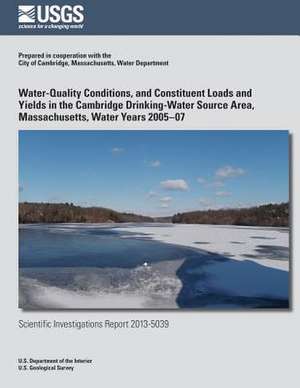Water-Quality Conditions, and Constituent Loads and Yields in the Cambridge Drinking-Water Source Area, Massachusetts, Water Years 2005?07
Autor Kirk P. Smithen Limba Engleză Paperback
Preț: 128.63 lei
Nou
Puncte Express: 193
Preț estimativ în valută:
24.62€ • 26.75$ • 20.70£
24.62€ • 26.75$ • 20.70£
Carte disponibilă
Livrare economică 31 martie-14 aprilie
Preluare comenzi: 021 569.72.76
Specificații
ISBN-13: 9781500266820
ISBN-10: 1500266825
Pagini: 86
Dimensiuni: 216 x 279 x 5 mm
Greutate: 0.22 kg
Editura: CREATESPACE
ISBN-10: 1500266825
Pagini: 86
Dimensiuni: 216 x 279 x 5 mm
Greutate: 0.22 kg
Editura: CREATESPACE
